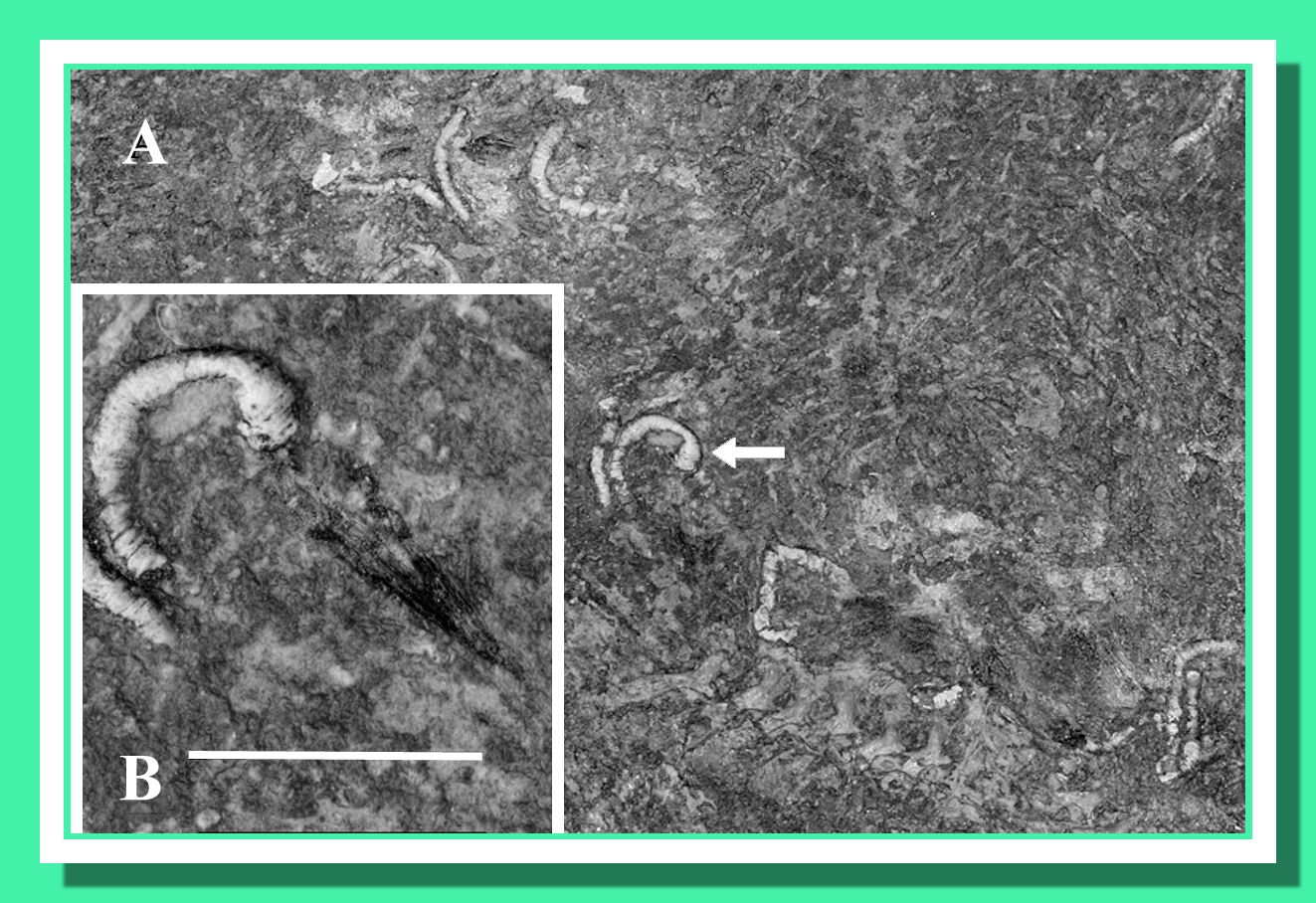The Middle Triassic Cassina beds
First results from a new excavation in the Monte San Giorgio UNESCO WHL site (Switzerland)
by This email address is being protected from spambots. You need JavaScript enabled to view it.
Museo Cantonale di Storia Naturale, Viale Cattaneo 4, 6900 Lugano, Switzerland.
Cassina beds (Lower Meride Limestone, Ladinian) belong to the world-known vertebrate levels of Monte San Giorgio Lagerstätte (Canton Ticino, Switzerland). A new research project (Stockar in prep.), started in 2006 by the Museo Cantonale di Storia Naturale, Lugano, includes for the first time micropalaeontology, microfacies analysis, taphonomy and palaeoecology of the whole sequence, the upper third of which has so far been excavated on a surface of around 40 m2. These data complete those derived from new vertebrate finds (mainly fishes represented by the genera Saurichthys, Archaeosemionotus, Eosemionotus and Peltopleurus) and allow a better characterization of the basin.
The studied sequence records a continuous background sedimentation mirroring fluctuating but generally oxygen-depleted conditions on the bottom of a basin below the wave base and adjacent to a shallow-water carbonate platform. The background sedimentation on a dysoxic to episodically anoxic seafloor resulted in a finely laminated sequence of black shales and limestones, bearing a monotypic meiofauna of a quasianaerobic biofacies.
Turbidites and volcanic layers account for short-lived events related to the instability of basin margins and to volcanic eruptions respectively. Terrestrial macroflora remains document the presence of land areas nearby. Widespread occurrence of carbonate nodules suggests a pulsating input from the adjoining Salvatore platform from which shallow-water taxa were swept into the basin during major storms. Platform-derived biota include dasycladaleans and a characteristic foraminiferal assemblage (Endotriadella, Endotriada, Hoyenella, "Trochammina", Cornuspira). This occurrence suggests a depositional setting close to the basin margin.
A mosaic of biostratinomic processes affects the vertebrate skeletons and in turn reflects relatively dynamic bottom-water conditions rather than permanently anoxic ones. Disarticulation is most intense in the front part of the body (head and abdominal cavity; Fig. 1), but the detailed pathways of the process clearly varies between representatives of different species. Disintegration patterns are similar to those resulting from decay processes caused by bacteria; only in a few cases, a limited influence of scavengers or bottom currents can not be excluded. However, the common excellent preservation of fish skeletons indicates an early cessation of decay after death. Sealing by microbial mats, protecting carcasses against disintegration, may account for the excellent preservation of the vertebrates. Moreover, limiting the diffusion of chemical elements, biofilms created particular geochemical microenvironments favourable to mineralization of soft parts (Renesto & Stockar 2009, this volume).

Figure 1: Typical preservation pattern in Archaeosemionotus. Scale bar: 1 cm.
References:
Renesto S. & Stockar R. 2009: Exceptional preservation of embryos in the actinopterygian Saurichthys from the Middle Triassic of Monte San Giorgio, Switzerland. Swiss Journal of Geosciences 102, in press.
All text and pictures are published with permission of Museo Cantonale di Storia Naturale di Lugano
All Rights Reserved © by Museo Cantonale di Storia Naturale di Lugano
Un grazie ai buoni uffici di Sergio Pezzoli di Evolution.
Questo studio e' stato presentato al 5th International Symposium on Lithographic Limestone and Plattenkalk - Naturhistorisches Museum Basel, August 2009